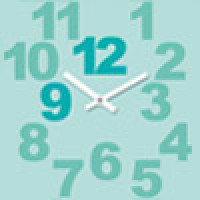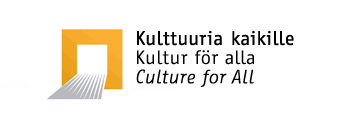
Learning outcomes in endangered Sámi languages assessed for the first time – revitalisation measures still needed
The recently completed assessment of learning outcomes in the Sámi languages showed that the pupils’ speaking skills were stronger than their writing skills. During their leisure time, many of the pupils only used Sámi a little. Education at school plays an important role in the revitalisation of the Sámi languages. The biggest problems are not having enough qualified teachers and especially the lack of learning materials.
In the spring of 2015, the Finnish Education Evaluation Centre (FINEEC) assessed the learning outcomes in the Sámi languages. Included in this assessment, which was carried out for the first time ever in Finland, were all pupils in grades 7, 8 and 9 studying the Sámi as a mother tongue syllabus or syllabus A for Sámi under the basic education curriculum. In total, 77 pupils from eight schools were included in the assessment. Of those 77, four pupils studied Inari Sámi and 33 studied Northern Sámi under the Sámi as a mother tongue syllabus, while seven pupils studied Inari Sámi, four studied Skolt Sámi and 29 studied Northern Sámi under syllabus A in Sámi. The assessment will be published on Tuesday 3 May 2016 at 09.30.
Pupils studying the Sámi as a mother tongue syllabus scored an average of 60% of the maximum points, while pupils studying the syllabus A in Sámi scored an average of 46% of the maximum points. In both syllabuses, the highest level of language proficiency was attained by pupils who studied Northern Sámi. There was great variation in the language proficiency levels attained by the pupils.
Situation of the Sámi languages still worrying
The preservation of the Sámi languages has been supported since the 1990s through education at school and language nest activities, among other measures. However, further measures for revitalising the Sámi languages are still needed.
– The situation is still worrying in all three Sámi languages, as shown by the low number of pupils included in the assessment and how little the Sámi languages are used by pupils at home or during leisure time. For instance, no one studied Skolt Sámi as a mother tongue, notes Project Manager Mari Huhtanen.
Only four of the pupils spoke only Sámi at home; the rest of the pupils also spoke Finnish alongside Sámi or spoke only Finnish at home. Pupils studying under the Sámi as a mother tongue syllabus did very little writing in Sámi in their leisure time, and did not read books written in Sámi. The extracurricular activities related to the Sámi language of pupils studying under syllabus A in Sámi occasionally included listening to Sámi music. The pupils’ views of the usefulness of the Sámi language were nevertheless fairly positive.
Girls’ language proficiency better in nearly all content areas
In Sámi as a mother tongue, the best learning outcomes were attained in speaking assignments; the average percentage of correctly completed questions was more than 80% in both Sámi languages. Pupils studying Inari Sámi found reading comprehension assignments to be the hardest; they only completed 22% of the questions correctly. For pupils studying Northern Sámi, the section in which they performed the weakest was writing (47%). In syllabus A in Sámi, the pupils performed the best in listening comprehension (58–68% questions completed correctly) and the weakest in language knowledge (Skolt Sámi 20%, Inari Sámi 32%, and Northern Sámi 38%).
In the assessment of language proficiency in the Sámi as a mother tongue syllabus and A syllabus in Sámi, the girls performed better than the boys in all content areas except in the mother tongue speaking assignments, in which the proficiency levels attained by girls and boys were fairly equal. In Sámi as a mother tongue, the percentage of correctly completed questions by girls in the examination as a whole was 65%, while the boys completed 57% of the all the questions correctly; in A syllabus in Sámi, the corresponding figures were 52% for girls and 39% for boys. The greatest difference in language proficiency in the Sámi as a mother tongue syllabus was in reading comprehension, in which the percentage of correctly completed questions by girls was 18 percentage points higher than that by the boys. In A syllabus in Sámi, the greatest difference was in writing skills: the girls’ percentage of correctly completed questions was 24 percentage points higher compared to the boys.
Learning materials often in Finnish or must be acquired from Norway
16 teachers responded to the survey for teachers. Of the respondents, slightly over half (56%) had language teacher qualifications. In the opinion of the teachers, the attainment of good learning outcomes was hindered most by the scarcity and quality of learning materials, and insufficient teaching hours. The teachers had to use a lot of Finnish-language materials or acquire materials from Norway, for example. Nevertheless, the teachers were highly motivated to teach the Sámi language. Most of the groups in which the Sámi language was taught comprised 3–5 pupils, while the smallest groups only had 1–2 pupils.
The assessment of learning outcomes in the Sámi as a mother tongue syllabus and syllabus A in Sámi produced information on the proficiency levels attained by pupils, on how well the objectives of the national core curriculum have been met, and on success in promoting educational equality. The assessment of learning outcomes in the Sámi as a mother tongue syllabus included language knowledge, reading comprehension, writing and speaking, while, in addition to these four, the assessment of A syllabus in Sámi also included listening comprehension.
Further information:
Project Manager Mari Huhtanen, tel. +358 29 533 5510, firstname.lastname@karvi.fi
The report
Mari Huhtanen and Mika Puukko (eds.). 2016. Teaching of Sámi languages and proficiency levels – Learning outcomes in Sámi languages in basic education grades 7 to 9 in 2015. Finnish Education Evaluation Centre (FINEEC).
